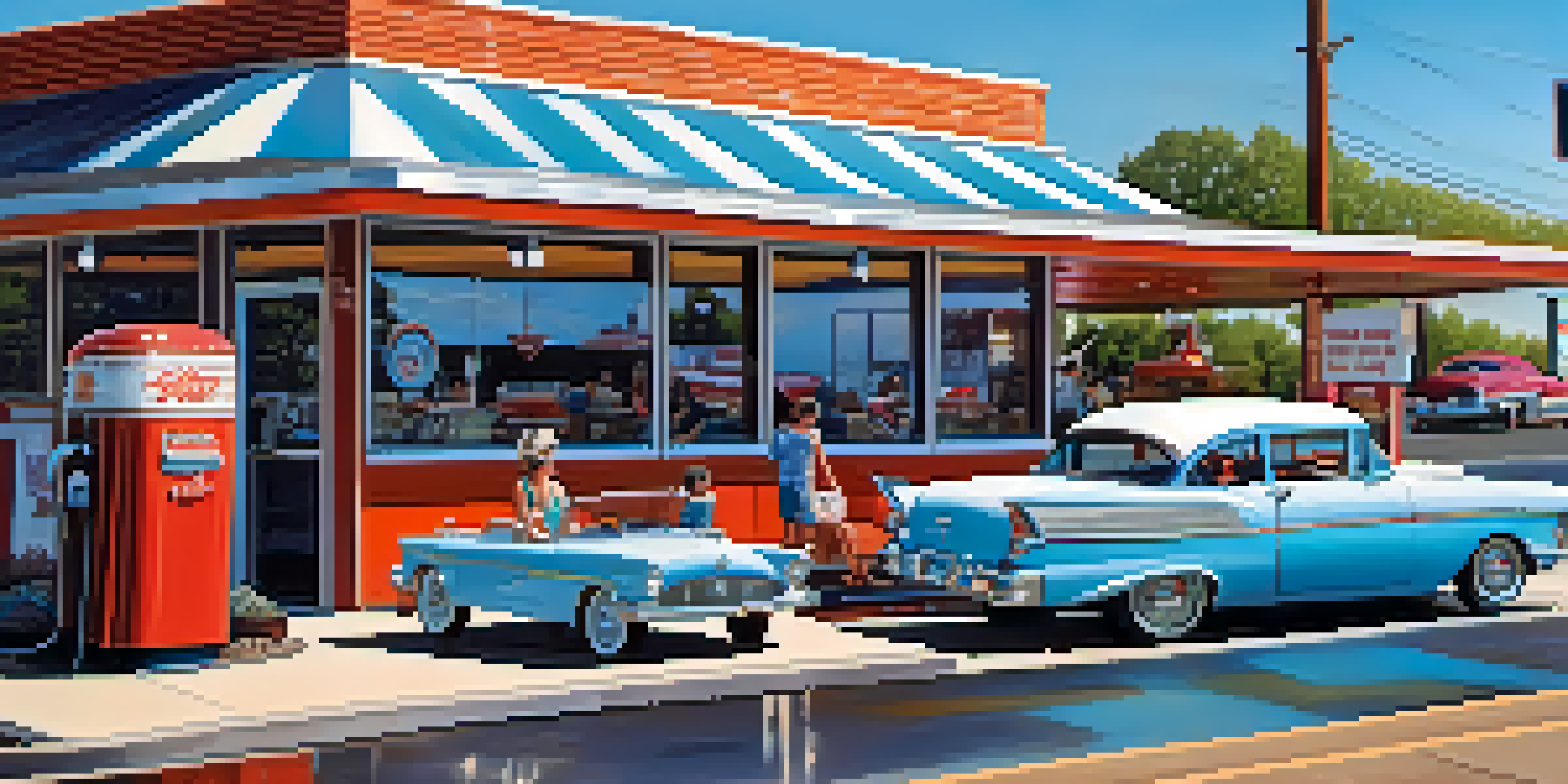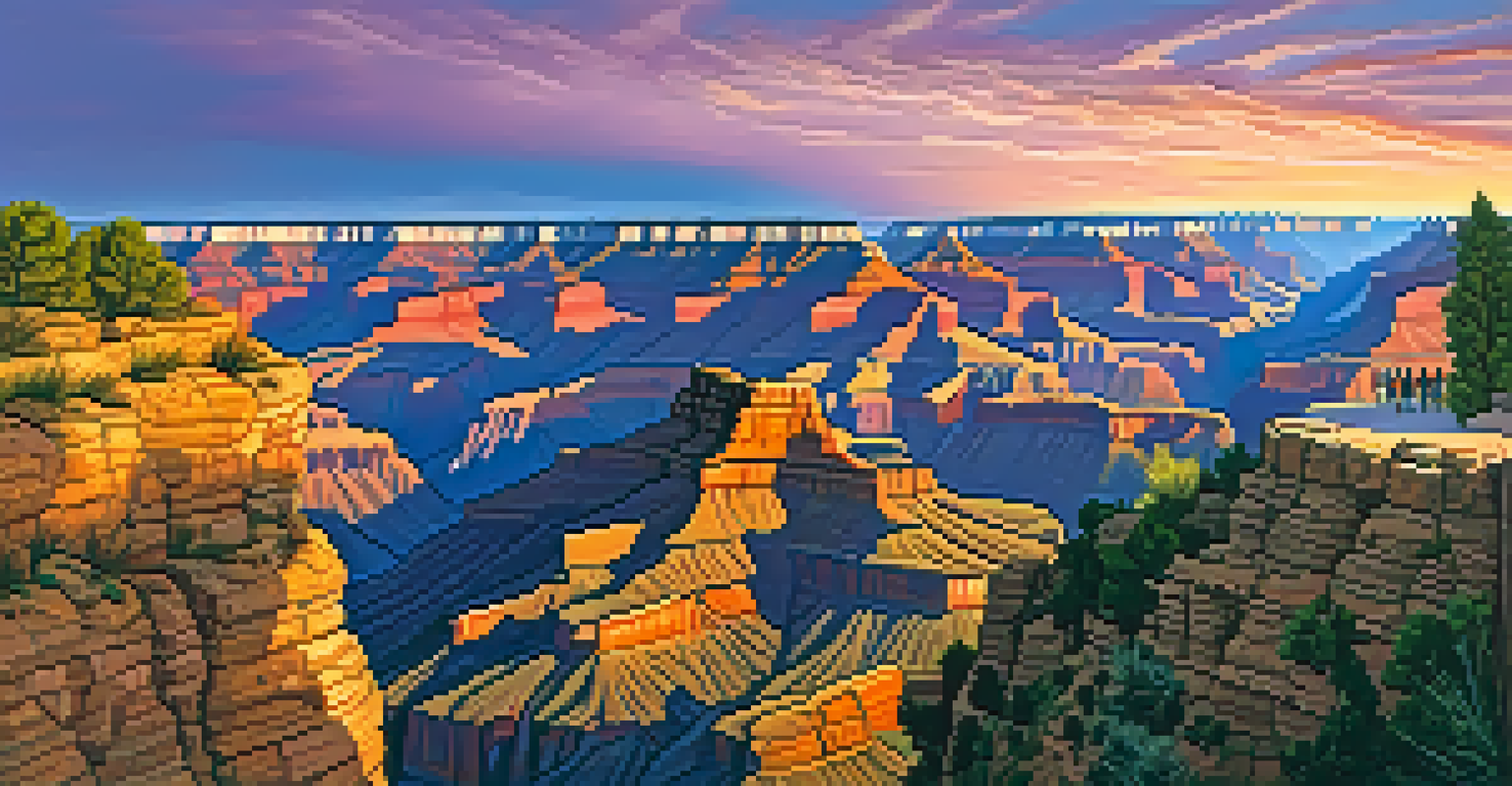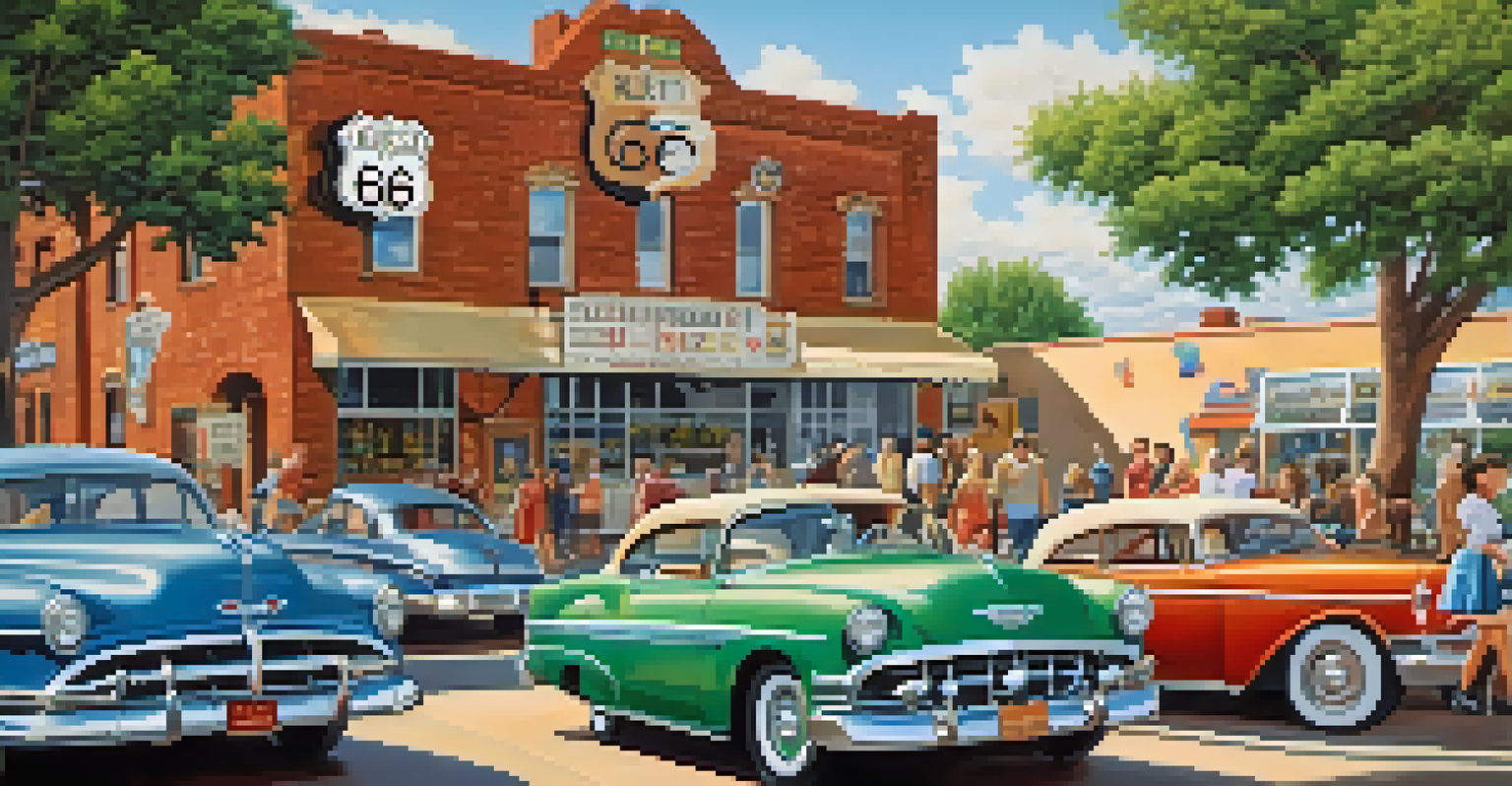Historic Route 66: A Cross-Country Cultural Exploration

The Birth of Route 66: America's Main Street
Route 66, often dubbed 'America's Main Street,' was established in 1926, stretching from Chicago to Santa Monica. This iconic highway served as a vital link for travelers seeking new opportunities during the Great Depression. Along the way, it became a symbol of freedom and adventure, attracting those eager to explore the American landscape.
The road goes on forever and the party never ends.
As families packed their cars for summer road trips, Route 66 became synonymous with the open road and the quest for the American Dream. The road was dotted with motels, diners, and quirky attractions that catered to the growing number of motorists. Each stop offered a glimpse into local culture, from homemade pies to vibrant roadside art.
The highway's influence on American culture is profound, inspiring music, literature, and film. From Bobby Troup's classic song 'Route 66' to the animated film 'Cars,' the road has captured the imagination of generations. It represents not just a physical journey, but also a passage through the heart and soul of America.
Cultural Landmarks: Icons Along the Route
Traveling along Route 66 is like stepping into a living museum of Americana. Iconic landmarks such as the Gateway Arch in St. Louis and the Wigwam Motel in Holbrook showcase the unique charm of the highway. These sites, often steeped in nostalgia, reflect the diverse stories and cultures that have shaped America.

Each state along Route 66 boasts its own set of attractions, from the stunning natural landscapes in Arizona's Petrified Forest to the vibrant art scene in Santa Fe, New Mexico. Travelers can explore historic diners that have served generations, like the famous Midpoint Cafe in Adrian, Texas, which claims to be the halfway point of the journey.
Route 66: A Cultural Icon
Route 66 serves as a vital symbol of American freedom, adventure, and cultural heritage, attracting travelers eager to explore its diverse attractions.
These cultural landmarks not only provide a taste of local history but also create a sense of community among travelers. Many of these spots have become gathering places where stories are shared and memories are made, reinforcing Route 66's role as a cultural touchstone in American life.
The Roadside Diner: A Culinary Journey
No trip along Route 66 would be complete without indulging in the classic roadside diner experience. These eateries, often family-owned, serve up hearty meals that reflect regional flavors and culinary traditions. From fluffy pancakes in the morning to juicy burgers at lunch, diners offer a taste of Americana that is hard to resist.
A journey of a thousand miles must begin with a single step.
Many diners feature retro decor that transports visitors back to a simpler time, complete with checkered floors and neon signs. It's not just the food that draws people in; it's the warm, welcoming atmosphere where locals and travelers alike can connect over a shared meal. This sense of community is a vital part of the Route 66 experience.
As you savor a slice of homemade pie or sip on a milkshake, you're not just enjoying a meal—you're participating in a tradition that spans generations. The culinary offerings along Route 66 tell stories of the people who have traveled this road and the rich tapestry of cultures that have influenced its cuisine.
Art and Creativity: Expressions Along the Route
Route 66 is also a canvas for artists and creatives who have found inspiration in its landscapes and stories. From vibrant murals in urban areas to sculptures dotting the roadside, art plays a significant role in celebrating the highway's cultural heritage. These artistic expressions not only beautify the journey but also tell the stories of the communities they represent.
Cities like Albuquerque and Tulsa are renowned for their public art installations, which reflect local history and culture. Street art, murals, and galleries showcase the creativity of artists who want to capture the spirit of Route 66. Visitors can even participate in art walks, experiencing the fusion of culture and creativity firsthand.
Culinary Treasures Await
The roadside diners along Route 66 offer hearty meals and a nostalgic atmosphere, making them essential stops for experiencing local flavors and community spirit.
This blend of art and travel fosters a deeper appreciation for the communities along the route. As you explore, you may find yourself inspired by the creativity around you, reminding us that art is an integral part of the American experience, especially along the historic highway.
Nature's Wonders: Scenic Stops Along Route 66
While Route 66 is celebrated for its cultural landmarks, it also offers breathtaking natural beauty. From the Grand Canyon in Arizona to the rolling hills of Missouri, the highway provides access to some of the country's most stunning landscapes. Each scenic stop invites travelers to pause and appreciate the diverse environments that characterize the American West.
Nature lovers can explore parks and monuments that showcase the area's ecological diversity. For instance, the Petrified Forest National Park features ancient trees turned to stone, while the Sand Dunes in New Mexico offer a unique desert landscape. These natural wonders complement the cultural experiences along the route, creating a well-rounded journey.
Taking the time to enjoy these scenic stops enhances the road trip experience, allowing travelers to connect with nature and reflect on the vastness of the land. The juxtaposition of manmade attractions and natural beauty is a reminder of the rich tapestry that is America.
The Legacy of Route 66: Past and Future
As we look back on the history of Route 66, it’s important to recognize its ongoing legacy. Despite the rise of interstates and modern highways, Route 66 continues to draw travelers eager to experience its unique charm. Efforts to preserve and promote the route have gained momentum, ensuring that its stories and culture are passed on to future generations.
Organizations and local communities are working tirelessly to maintain historic landmarks and promote tourism along the route. This dedication not only honors the past but also fosters economic growth in the regions it traverses. By supporting local businesses and preserving cultural heritage, Route 66 remains relevant today.
Nature and Art Blend on the Route
Travelers can enjoy stunning natural wonders and vibrant artistic expressions that enhance the journey, showcasing the rich tapestry of American culture.
The enduring appeal of Route 66 lies in its ability to evoke nostalgia while embracing change. It serves as a reminder of the importance of road trips, exploration, and connection—values that resonate deeply in our fast-paced world. As long as there are travelers seeking adventure, Route 66 will remain a beloved symbol of American culture.
Planning Your Route 66 Adventure
Ready to hit the road? Planning a journey along Route 66 can be an exciting adventure in itself. With countless resources available, from guidebooks to online forums, travelers can curate their own unique experiences tailored to their interests. Whether you're seeking historical landmarks, culinary delights, or natural wonders, there's something for everyone.
Consider breaking your trip into segments to fully appreciate each area you explore. This allows for a leisurely pace, giving you time to visit local attractions and connect with the communities along the way. Don't forget to take plenty of pictures and interact with locals to get the most out of your experience.

As you embark on your Route 66 adventure, keep an open mind and a sense of curiosity. The journey is just as important as the destination, and the stories you discover will become part of your own adventure. So buckle up and get ready for a road trip filled with memories that will last a lifetime!